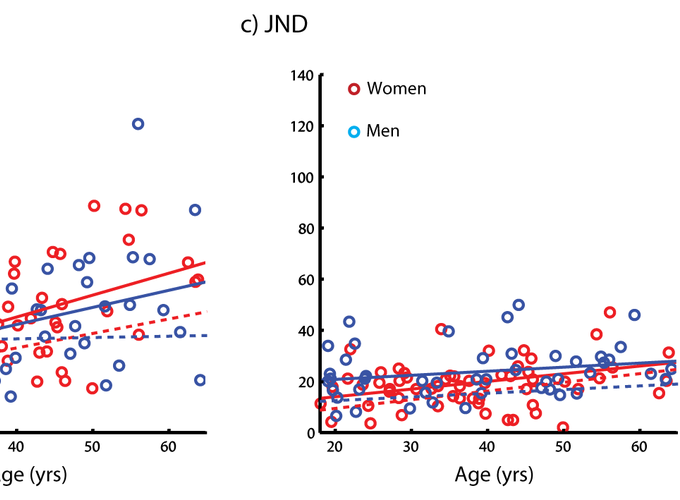Age related sexual dimorphism in temporal discrimination and in adult onset dystonia suggests GABAergic mechanisms

Age related sexual dimorphism in temporal discrimination and in adult onset dystonia suggests GABAergic mechanisms
Abstract
Background: Adult-onset isolated focal dystonia (AOIFD) presenting in early adult life is more frequent in men, whereas in middle age it is female predominant. Temporal discrimination, an endophenotype of adult-onset idiopathic isolated focal dystonia, shows evidence of sexual dimorphism in healthy participants. Objectives: We assessed the distinctive features of age-related sexual dimorphism of (i) sex ratios in dystonia phenotypes and (ii) sexual dimorphism in temporal discrimination in unaffected relatives of cervical dystonia patients. Methods: We performed (i) a meta-regression analysis of the proportion of men in published cohorts of phenotypes of adult-onset dystonia in relation to their mean age of onset and (ii) an analysis of temporal discrimination thresholds in 220 unaffected first-degree relatives (125 women) of cervical dystonia patients. Results: In 53 studies of dystonia phenotypes, the proportion of men showed a highly significant negative association with mean age of onset (p < 0.0001, pseudo-R2 = 59.6%), with increasing female predominance from 40 years of age. Age of onset and phenotype together explained 92.8% of the variance in proportion of men. Temporal discrimination in relatives under the age of 35 years is faster in women than men but the age-related rate of deterioration in women is twice that of men; after 45 years of age, men have faster temporal discrimination than women. Conclusion: Temporal discrimination in unaffected relatives of cervical dystonia patients and sex ratios in adult-onset dystonia phenotypes show similar patterns of age-related sexual dimorphism. Such age-related sexual dimorphism in temporal discrimination and adult-onset focal dystonia may reflect common underlying mechanisms. Cerebral GABA levels have been reported to show similar age-related sexual dimorphism in healthy participants and may be the mechanism underlying the observed age-related sexual dimorphism in temporal discrimination and the sex ratios in AOIFD.